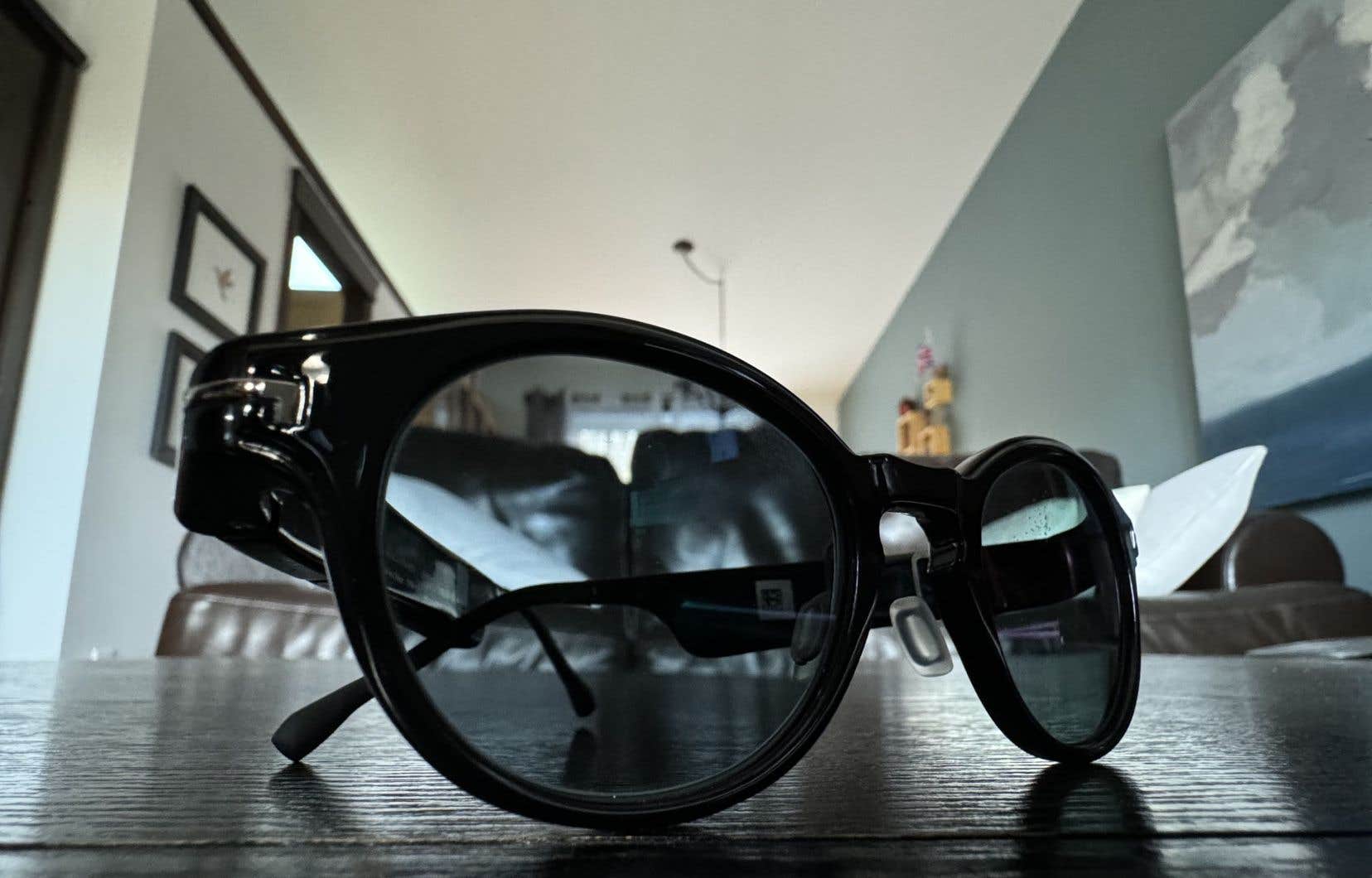This is the first idea that many people have when they first come into contact with ChatGPT: imagine the possibility of having access to this digital assistant at any time of the day or night… And that’s what a manufacturer of connected glasses is offering this fall. But it’s not who you think!
Indeed, even if Meta is making a big splash with the second version of its Ray-Ban brand connected glasses, it is a company called Solos, a Hong Kong glasses manufacturer almost unknown to the general public, which is marketing these days the most promising trendy glasses. Solos has just launched a new version of its AirGo connected lens technology. Its main new feature: direct voice access – in the language of your choice – to ChatGPT, which here adopts the role of a personal digital assistant which aims to be more versatile than Siri or the Google Assistant.
Solos AirGo 3
Basically, Solos glasses act as simple wireless headphones. You can listen to music, or make a call and use the AirGo glasses as a hands-free phone device. They pair using Bluetooth. Their autonomy is 10 hours of use per charge, which is very quite acceptable.
The manufacturer says it has developed an ambient noise cancellation system which improves voice pickup, but the interlocutor does not always hear what is said to them. Solos says this will be fixed in an upcoming firmware update for its glasses.
The glasses themselves can be smoked, or not. Clear lenses that only block blue light are also available. You can add a prescription to them before ordering a pair. Practical.
Blue light filter glasses are designed to be worn in front of a computer screen. This makes sense, since it is a context in which one may want to quickly access a digital assistant like ChatGPT, which is capable of producing in a few seconds the summary of an entire encyclopedic entry on any subject. It can be as local as questions about the history of the Patriots in the 1830s, or as exotic as a list of the best restaurants in New York or Paris.
However, there are limits to what we can ask ChatGPT through our glasses. To access them, you must first make sure to open the Solos application on the phone with which they are paired, then activate the digital assistant mode integrated into this application. We then only have access to the basic version of ChatGPT, the one which stopped collecting information in September 2021.
The conversations we have with ChatGPT are transcribed in the application. You can copy and paste the text into an email, a text message or elsewhere. It would have been really more interesting to automate this function so that we could do it by voice command. We would also have liked to have access to version 4.0 of OpenAI’s generative AI, the most recent. We can add extensions to this version, such as the possibility of searching for more recent answers anywhere on the Internet.
The application also offers to use ChatGPT as an instant translator, but, again, the experience is not as natural as we would have liked: you have to go through the application to see the translation, and you have to specify in advance which language you wish to translate, which, when you meet a foreigner in the street, is not very convenient (or even polite…).
In short, all this is promising, but for the moment limited. Which leaves one wanting more, given the price of the glasses, which starts at $350 with a subscription cost of US$10 per month to access ChatGPT.
Meta and Ray-Ban respond
Solos’ glasses still cost $100 less than those of Meta and Luxottica, the multinational that owns the Ray-Ban brand. This second version of their own connected glasses uses the same formula, but better, than their predecessors: the sound is more nuanced, the connectivity is more stable, and the choice of frames and lenses is wider, with a possibility of almost 150 different combinations.
Like previous models, Ray-Ban’s connected glasses (that’s their name) also include cameras on the front. Not only can we use them to listen to music or interact with Meta’s digital assistant to send content to our Facebook or Instagram feed, but we can also broadcast live the video captured by our glasses!
Unsurprisingly, Meta is targeting influencers with this product, which is sure to raise lots of questions about respect for the privacy of people who are filmed, sometimes perhaps without their knowledge. Shows that glasses can be connected without being very intelligent…
But OK. At $450, Ray-Ban’s smart glasses are unlikely to sell in very large numbers. Especially since they offer very few options for retouching the images they produce, which people who are very active on social networks cannot do without.
